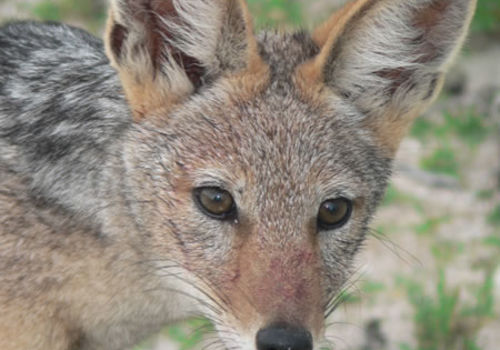
Side striped jackal
Canis adustusSide striped jackal
Introduction: The side-striped jackal (Canis adustus) superficially resembles its more well-known cousin, the black-backed jackal, mainly due to its white-tipped tail. It is also similar in size to the black-backed jackal, comparable to a medium dog. They hunt alone or in pairs, in a territory they defend. Its snout is blunter and the ears shorter than the black-backed jackal, and they can usually be seen in pairs and family groups of up to 6. They favour well-wooded areas and flood-plains.
Unlike the black-backed jackal, the side-striped jackal avoids open savannah grassland, favouring more thickly wooded countryside, but not in forest. Main peaks of activity appear to be just before sunrise and early in the night.
Owl-like hoots and a series of explosive hoots, are a part of the side-striped jackals' varied vocal repertoire. They are active in the early morning and at night, especially if you happen to be having a braai in Caprivi!
Distribution: It has a wider distribution range than the black-backed jackal, but in Namibia is usually only seen in the extreme northern parts of the country.
Diet: They eat less than other jackals, with wild fruit being a favourite meal, as are small mammals and insects and occasionally reptiles. Carrion will be eaten if found.
Colouring: They have a greyish coat with a white-tipped tail and a white stripe on their flanks, with varying degrees of width and boldness.
Breeding: Litters consist of between 4 to 6 and the young are born in holes in the ground, usually disused aardvark holes, adjusted to the females needs with a second entrance for escape purposes.
Size: Side-striped jackals stand around 40cm at the shoulder and have a mass of between 8-12kg. Females are similar in size and mass, all be it slightly smaller.
Klein Windhoek

